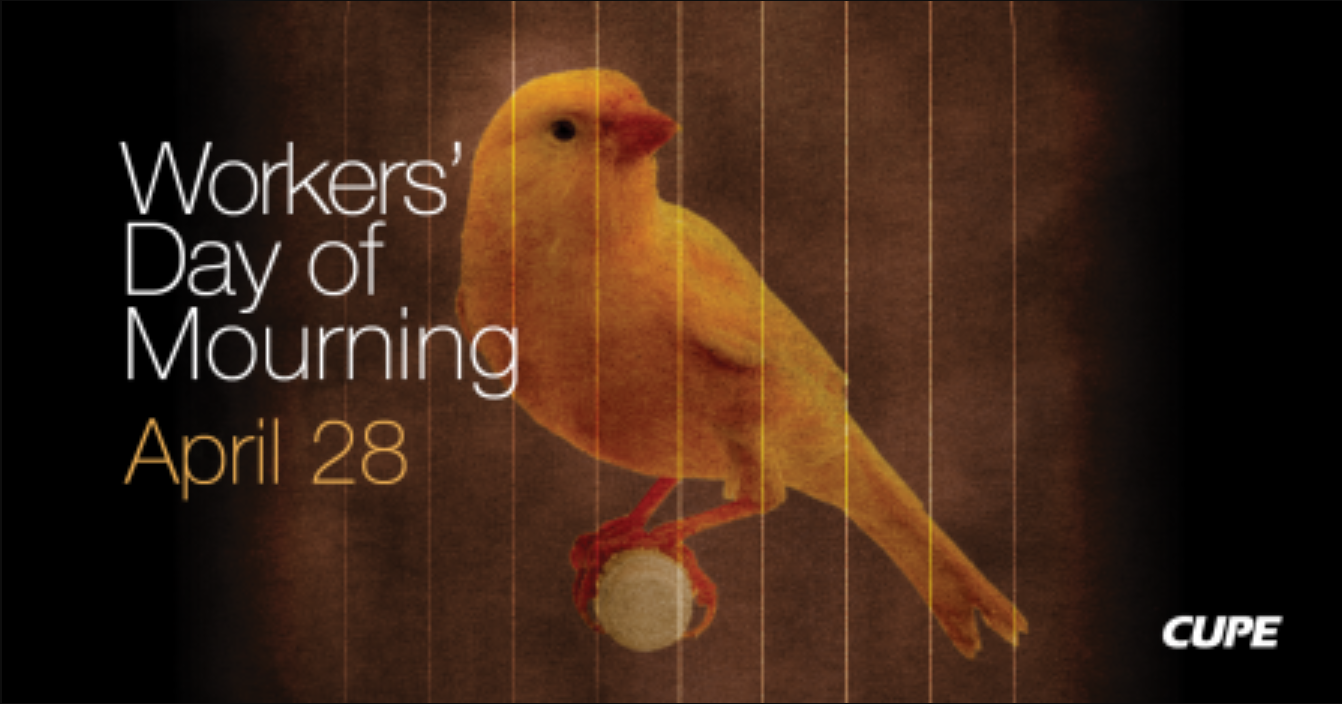
April 28, 2022 marks the third Workers’ Day of Mourning since the start of the COVID-19 pandemic. 40 years ago, CUPE members created this day to remember workers who lost their lives on the job and to inspire others to advocate to prevent further tragedies.
Although most provinces are rolling back public health measures, we know that workers need different rules to keep them safe at work.
Workers must continue to push their employers to prevent exposure to COVID. Measures to increase ventilation, limit capacity, and prevent COVID positive people from entering the workplace must remain in force. Employers need to provide adequate sick time for workers to recover from all illnesses. And when workers must do their job in proximity to people with suspected or confirmed cases of COVID, adequate personal protective equipment must be provided and required.
Unacceptable losses
Workers in Canada continue to be killed at a completely unacceptable rate. The most recent available statistics show that nearly 1,000 workers are killed on the job each year – a number that does not include claims rejected by compensation boards.
This year, we remember the following CUPE members who died because of work in 2021:
Remembering your four rights
The Day of Mourning was created by CUPE members 40 years ago to remember those who lost their lives on the job and to inspire other workers to advocate to prevent further tragedies.
As trade unionists, it is our responsibility to continue this fight. We must ensure that all workers know about the four workers’ rights enshrined in every health and safety law in the country:
The role of health and safety committees
Employers across Canada must provide a healthy and safe workplace. Employers are legally obligated to collaborate with workers on health and safety committees to highlight issues and find safe solutions.
Unfortunately, for the past two years, health and safety committees have been under attack. CUPE members are reporting several reoccurring problems, from meetings being perpetually cancelled, to employers appointing union representatives and purposefully scuttling committee efforts.
We must remember that the health and safety committee is our forum to raise issues and make recommendations to employers. To that end, we need to re-double our efforts to build our capacity, to ensure that we document hazards, keep careful records, and report back to members when our employers refuse to remove hazards or control risks from hazards that cannot be removed. When all else fails, we need to ensure our documented concerns are sent to governmental inspectors so that workers stay safe.

Langley School District #35
(Custodial & Maintenance)